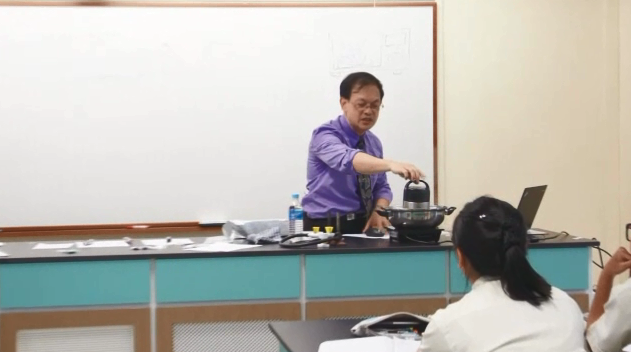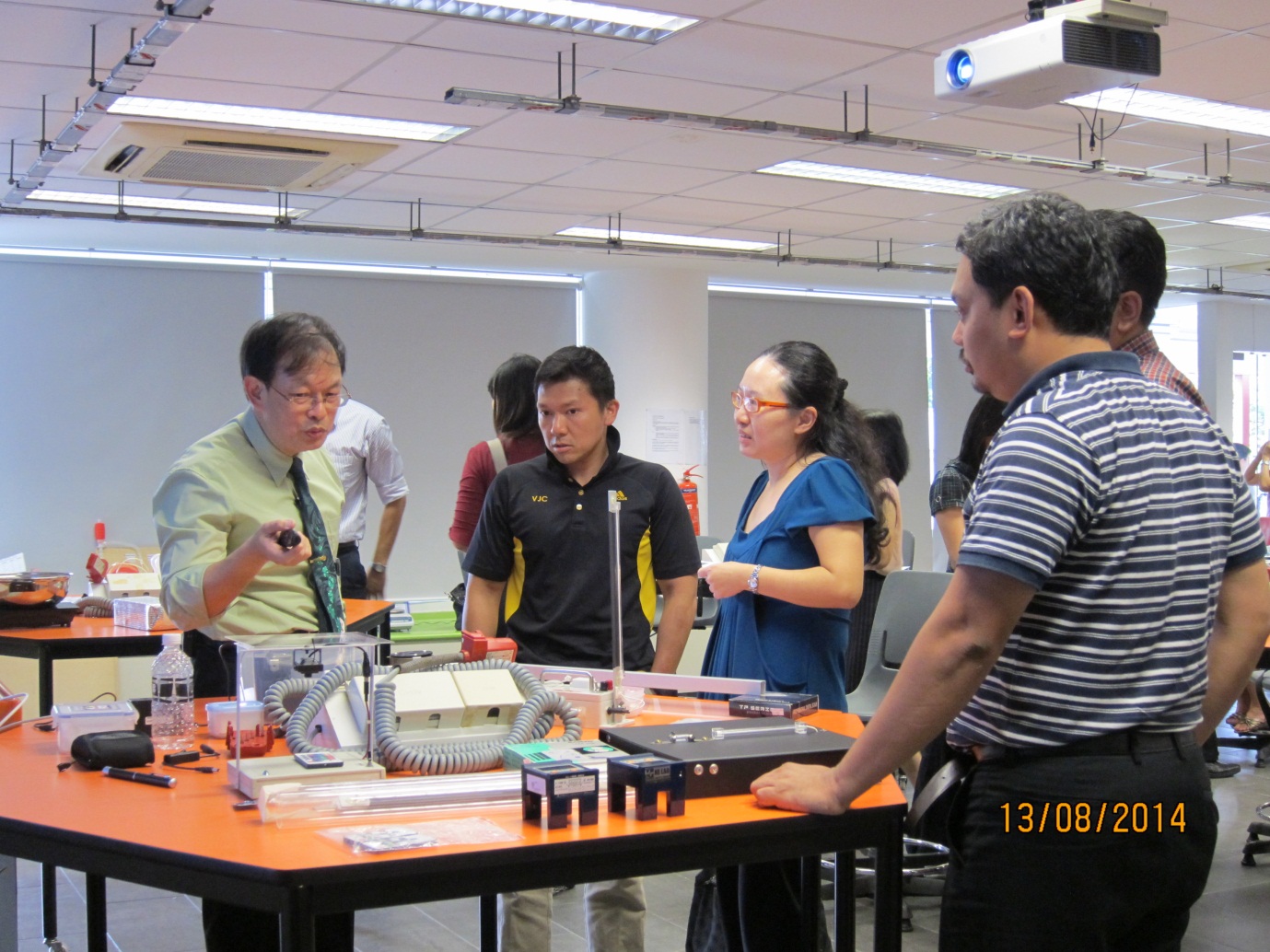Mr Philip Lee (4 to 20 August 2014)
Mr Philip Lee (4 to 20 August 2014)
AST’s 14th OEIR
Mr Philip Lee was the former Head of Department of Physics in St. Mary’s Canossian College, Hong Kong. Prior to his recent retirement in mid-September 2014, Philip has had 35 years of teaching experience at the Diploma of Secondary Education (DSE) level under his belt. Philip was also a recipient of the highly prestigious Hong Kong Chief Executive’s Award for Teaching Excellence (2012-2013) in the Science Key Learning Area.
As a practising physics teacher of Forms 3–6 students, he advocated the use of demonstrations using apparatus fashioned out of everyday items to enhance his students’ learning of physics. For example, he made a micro-gravity apparatus for students to observe an object in free fall using a regular cardboard box, styrofoam, a candle and a small portable camera. Back in Hong Kong, he even converted a corner of his physics laboratory into the “St. Mary’s Kitchen”, where he made use of unwanted but functional electrical appliances such as induction cookers to demonstrate physics laws at work in day-to-day life. This was especially well received by the students of an all-girls’ school like St. Mary’s Canossian College. Aside from demonstrations in lessons, Philip encouraged and mentored his students to participate in science competitions, both in and out of Hong Kong. In his final years leading up to his retirement, Philip also devoted his time to recording his demonstrations on videos and in manuals, hoping that more students and teachers would benefit from his materials. Furthermore, he also shared his experiences and introduced his inventions to other physics teachers in a seminar held by the Education Bureau of Hong Kong, which he also did with Singapore teachers during his OEIR stint in August 2014.
During his attachment, he conducted four Master Classes: one for junior college physics teachers and three for secondary school physics teachers. His Master Classes helped our educators understand how to incorporate physics demonstrations into classroom teaching in an effective and timely manner, making use of a series of demonstrations designed to support the learning of physics topics such as heat transfer, light and electromagnetism. For this purpose, Philip brought along with him approximately 50 kg of apparatuses to model the demonstrations for our educators. Furthermore, he engaged our educators with real world problems that could be solved by applying physics theories, demonstrating the importance of building a bank of well-designed authentic questions to check students’ conceptual understanding.
He also showed video clips of the class he taught at Shuqun Secondary School and distilled key elements of a well-structured lesson to engage students in the learning of physics. From the feedback received, teachers were convinced that relating the teaching and learning of physics to everyday problems and situations was key to engaging students. The teachers also took away from the Master Classes the understanding of timely and effective demonstrations that reinforce students’ learning, instead of their being just a “hook” to engage students’ interest in learning, as well as some know-hows to start building simple apparatuses for their own teaching purposes.
Besides the Master Classes, Philip met with officers from the Sciences Branch of the Curriculum Planning and Development Division (CPDD) and academics from the National Institute of Education (NIE), and discussed with them issues related to the teaching and learning of physics, particularly in the area of developing innovative teaching and learning resources such as videos and manuals. In addition, he visited five schools where he had the opportunity to observe lessons and have professional conversations with the school leaders, heads of departments (HODs) and teachers. He also had a dialogue session with the HODs where they engaged in discussion on departmental leadership. Finally, he engaged in a dialogue session with Master Teachers on innovative teaching, where they discussed how teacher leaders are in a position to share pedagogical tools and teaching resources, such as a question repository, with other teachers to promote instructional excellence.
Throughout the OEIR programme, Philip’s philosophy of teaching was evident through a simple but effective approach which he used to engage students in his teaching. This approach which he coined as the “stairs and platform” is useful for teachers framing a lesson. The “stairs”, or a set of steps, represent the teaching of new concepts (through direct instruction or demonstrations) with intentional scaffolding to facilitate students’ construction of new knowledge, while the “platform” at the higher level represents purposeful classroom learning activities (such as review worksheets or quizzes) that provides students with time to reflect on or to apply their learning, and for teachers to check students’ understanding and to clarify their doubts, if necessary. Using the “stairs and platform” approach in his own teaching with our Singapore students, Philip exemplified that direct instruction, coupled with good demonstrations and powerful questioning, can be just as effective in engaging students. He successfully demonstrated effective use of limited classroom time, and this feat of his was not only inspiring, but also is great learning for Singapore teachers!




